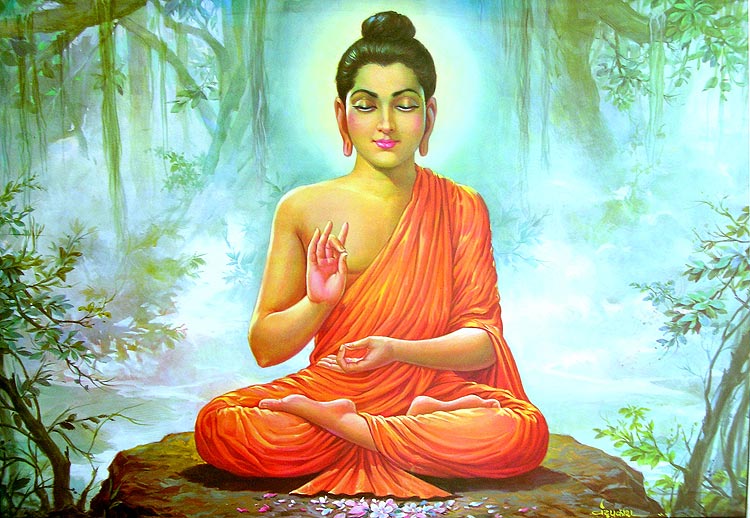After interviewing a group of ten practicing Buddhists who meditate at least 3x per week, I discovered that these spiritual practitioners view and interact with their world in accordance with mindfulness and meditative principles. When I use the word "mindfulness," I am referring to a mental state in which that mindful person is aware and conscious of her thoughts, feelings, and physical body. Simply put, to be mindful is to be aware of all phenomenon that the self is experiencing. This is similar to meditative principals, which refer to living in the present, and are often pigeon-tailed with mindfulness.
Eva Simons says that, as a practicing Buddhist, she tries to be mindful as much as possible. To her, this includes not only attempting to be aware of herself and to live in the present moment, but also eliminating distractions that can prevent mindfulness. One method Eva employs for eliminating distractions is to wear comfortable, breathable, clothes. As a teenage boy in Scottsdale, my first reaction was to think that she is a little slow-- who wouldn't want to wear comfy clothes all day? However, the working world is not as lax as life in high school, and sometimes you have to compromise. Eva selects a wardrobe that a) meets working-place standards, and b) is as comfortable as possible. This means forsaking some outfits that pride themselves on fashion and elegance, yet as a result may tax the comfort level. When Eva feels comfortable, it is easier for her to be happy, and she has a "better chance of staying mindful." Additionally, because Eva likes to meditate, wearing comfortable clothes ameliorates any transition between the previous activity and meditation.
Another man I interviewed claims that he tries to see as much as possible during the day. According to this man, "we see so many things during the day, like the sky or plants or anything, but we never really look at it." He related this thought to meditation, saying that in order to truly live in the present, we have to see what we are looking at-- not just glance over it with "glazed eyes." This man says that by trying to see as much as possible, he is filled with a greater appreciation of life and his environment, especially is a setting such as Arizona. He states that this process centers him, both eliminating stress and creating peace.
All ten individuals state that they try to live their lives in accordance with mindfulness and living in the present. Everybody has their own techniques that work for them-- some wear comfortable clothes, some focus on seeing the world around them, while others try to exercise, or schedule their day for a few moments of dependable relaxation. This is an examination of just ten practicing Buddhists in Scottsdale and Phoenix-- I wonder how this group would relate to other Buddhist communities in America, or even in Eastern countries such as India or China. I lack the resources to actualize this curiosity, but for now, I am content with the knowledge of my community.









